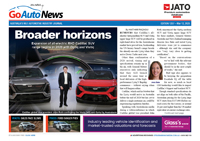 1 Nov 1994
1 Nov 1994
NOTE: Audi changed from using numbers to an alphanumerical naming system for its model ranges after the release of the A8 and A4 in Europe during 1994. The C4-series A6 is a derivation of the C4-series Audi 100 that dates from 1991.
Audi’s new alphanumerical naming policy that debuted in the all-new A4 and A8 range during 1994 was applied to the C4’s mid-life facelift not long after, to create the A6.
A smoother nose and tail and new interior trim were underpinned by refinements to the suspension and steering, to create a dated but worthy rival to the newer BMW 5 Series and Mercedes E-class ranges unveiled during 1995.
The 2.8 V6 vanished, leaving the 2.6 V6 to power all models including the Avant (until early '96) and quattro all-wheel drives.
Three new models featuring a new 2.8 30-valve motor emitting 142kW of power and 280Nm of torque were added to the existing range, along with a small facelift and specification upgrade, from January '97 until the virtually all-new C5 A6 lobbed from October '97.
























